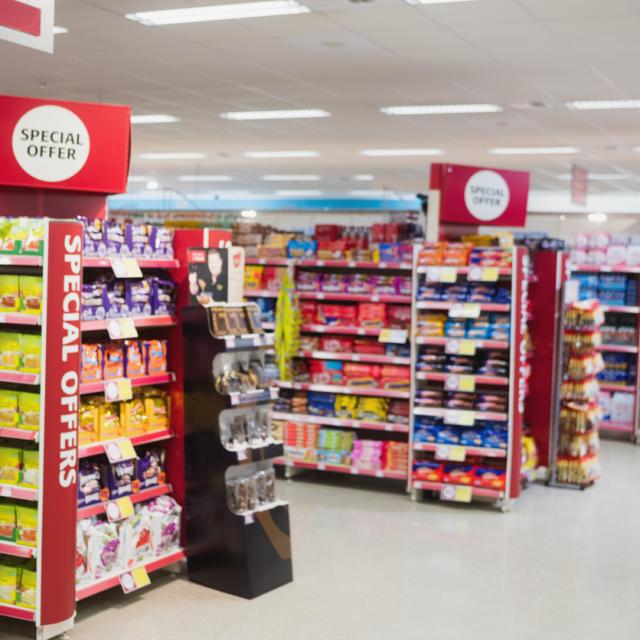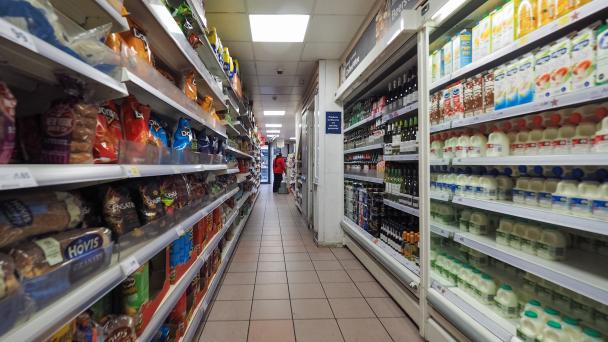New research shows no increase in the proportion of adults in England with autism or psychotic disorders
 Press release
Press release

This report is independent research commissioned and funded by the National Institute for Health and Care Research Policy Research (NIHR) PRP-PRU-02-15-Healthy Weight. The views expressed in this publication are those of the authors and not necessarily those of the National Institute for Health and Care Policy Research, the Department of Health and Social Care or its arm's length bodies, or other Government Departments.
This report focuses on changes to the extent of food and drink high in fat, sugar, or salt (HFSS foods) displayed in specified locations (store entrances, end of aisles, checkout areas including self-checkouts, and standalone units) in supermarkets and convenience stores in England before and after the introduction of the Food (Promotion and Placement) (England) Regulations in October 2022. These regulations restrict the placement of HFSS foods from specific food categories in these locations, in retail outlets that are 2,000 square feet or over and have 50 or more employees. HFSS foods are identified using the Nutrient Profile Model (NPM) scoring system (detailed in the NPM Technical Guidance). The purpose of this report is to provide a baseline from before the implementation of the regulations, followed by a comparison after implementation of the regulations. This research contributes to the evaluation of the impact of the legislation and its effects on the display of HFSS foods in specific restricted locations.
Findings presented here are based on observational data collected from 23 individual stores (19 supermarkets and four convenience stores) from four chains in England in spring/summer 2022 (pre-legislation) and spring/summer 2023 (post-legislation). Observational data of products displayed at the locations identified by the regulations were captured using video glasses. The data was then coded.
First, products were assigned to one of three groups:
Second, the relative location space used to display products within a store was estimated:
This report presents findings describing the proportion of location space used to display different product types. This assessment uses relative area of location space, which enables comparisons of percentage differences between the baseline data and follow-up data, accounting for changes in store layout.
This work was intended to be representative of supermarket and convenience stores in England, but unforeseen recruitment issues significantly reduced the number of stores and chains in the final sample. As such this report presents a case study of 23 stores from four chains (19 supermarkets and four convenience stores) and is not intended to be used as a representation of all food and drink retailers.
Pre-legislation data collection showed that substantial proportions of location space were being used for the display of food and drink high in fat, sugar, or salt, providing a clear rationale for implementation of the restrictions. Post-legislation data collection allows for comparisons in the use of space before and after the implementation, to test whether HFSS products have been removed, and to quantify the proportions of space used to display HFSS, non-HFSS and out-of-scope products. See section 2.4 in the report for detailed definitions of these three groups products were assigned to.
Key findings from pre- and post-legislation comparisons show that:
Observational data were collected from 23 individual stores (19 supermarkets and four convenience stores) from chains in England in spring/summer 2022 (pre-legislation/baseline) and spring/summer 2023 (post-legislation). Observational data of products displayed at restricted locations were captured using video glasses, and coded based on their nutritional content to determine whether they were high in fat, sugar, or salt. The relative amount of space each product took up within a location, and the amount of space locations took up relative to one another, was also coded, and used to determine the proportion of space used to display products that were high in fat, sugar, or salt.
 Press release
Press release
 Press release
Press release

 Press release
Press release
Receive a regular update, sent directly to your inbox, with a summary of our current events, research, blogs and comment.
Subscribe